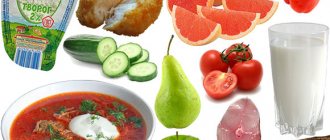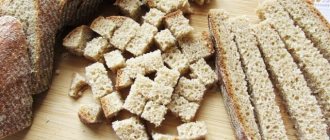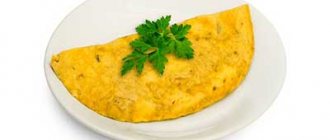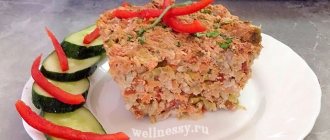Are you already running to the gym? Wait
Our calculations should not be taken to heart: in any case, there will be discrepancies with reality.
Firstly, because the calorie content of your Olivier salad depends on its exact recipe: what if you put more carrots there and didn’t put sausage at all? Secondly, when calculating calorie consumption, we were guided by the “average working man of Minsk”: he is 35 years old, his height is 174 cm, and his weight is 73 kg. If your build differs from the statistics, then your energy costs will be different.
There is a third reason: everything in our body is not so simple. As nutritionists explain, the body does not know how to burn calories just like that, for the sake of “working off” what it has eaten - each one is spent according to a strict internal schedule, and an extra half hour on the track will almost certainly not burn off that yesterday’s cake.
Homemade recipe
Often, home lovers of culinary exploits settle on the most exotic and irresistible options. One of them can be called salami. If you search for a recipe for it at home on Italian websites, then at best you will find a way to prepare sweet sausage for dessert.
We will share with you a simple recipe for homemade sausage. But, in fairness, we note that it is impossible to cook real Italian salami in your kitchen. So, we will need:
- Pork – 850 g;
- Lard – 150 g;
- Salt – 25 g;
- Dry wine – 10 ml;
- Pepper – 5 g;
- Garlic – 5 cloves;
- Spices to taste;
- Pork intestines.
You can use a variety of spices in the recipe (cloves, nutmeg, ginger, etc.). It all depends on your taste. The intestines are usually sold clean, but still, they should be washed additionally under running water. Why do we take pork? They are optimal in diameter.
Grind lard (10 mm thick slices) and meat (small cubes). Place the pork in the freezer until it is slightly frozen (but not frozen). We twist the meat in a meat grinder with large diameter holes, and finely chop the lard by hand.
Add salt, wine and spices to the mixture and mix thoroughly. Using a sausage attachment, fill the intestines with minced meat. We make constrictions along the length to form sausages. Carefully inspect the resulting sausage for the presence of air bubbles. If there are any, then they need to be pierced.
We wrap the sausages with twine and hang them in a cool room with low humidity for about 7 days. During this time, the product will lose some of its moisture and acquire the required consistency.
Cooked sausage “ala salami” should be stored in the refrigerator. It will be an excellent snack for alcoholic drinks. You can also make a salami pizza by adding cheese, tomatoes, olives, bell peppers, onions and slices of your homemade masterpiece.
Table of composition (proteins, fats, carbohydrates) and calorie content of foods
For reference. Calorie content is the amount of energy received by a person as a result of the absorption of a particular product. The number of calories a person needs depends on the work performed, physical activity, gender, age, latitude (cold or hot climate). Like any fuel, food products, when burned in the body's furnace, release energy. Therefore, food has a certain energy value that can be measured (for example, in kilocalories or joules). Therefore, another name for the energy value of food products is calorie content. Each of us has more than once seen on the factory packaging of store-bought products a number that corresponds to the energy value of 100 g of this product. Anyone can calculate how much energy their body will receive after consuming a certain amount of a product.
Knowing someone's daily diet, that is, the number of foods eaten per day, including drinks, and their energy value, it is easy to calculate the amount of energy received - the calorie content of the daily diet. Biochemists and nutritionists have long calculated the calorie content and composition of almost all food products.
It is simply impossible to provide for all the variety of food. However, taking into account the information on food labels, calculating the calorie content of the daily diet does not present serious difficulties.
The weight of one piece of black bread is about 35 grams, and a piece of white bread weighs about 25 grams. A slice of loaf weighs 20 grams.
A piece of black bread weighs 35 g, and a piece of white bread weighs about 25 g.
Bread is one of the most important foods on our table, present at every meal. Indeed, a slice of fragrant black bread ideally “sets off” the taste of aromatic borscht. And what a delicious breakfast you can have with a piece of fresh white loaf, spread with honey or butter. And it’s impossible to imagine preparing a variety of canapés and sandwiches without bread. Of course, many nutritionists argue that due to its high nutritional value, it is better to completely exclude bread from the diet. However, today the range of bakery products is so wide that you can easily choose a product with a low calorie content. To correctly calculate the calorie content of a serving, you need to know how much a piece of bread weighs, as well as the calorie content in 100 grams of the product.
Properties of salami sausage
Nutritional information | Vitamins | Minerals
How much does salami sausage cost (average price per 1 kg)?
Moscow and Moscow region.
415 rub.
At a time of complete gastronomic shortage in Russia, the overseas combination of words “ salami sausage ” for many was a symbol of a beautiful, wealthy, and most importantly, tasty life, which only the powerful could afford. No one would have guessed that this European delicacy did not have such a noble origin. Initially, the birthplace of salami was Hungary, after which this sausage “received registration” in Italy, and then it was from there that it began to spread throughout the world.
Dry-cured sausage called salami is usually covered with a thin layer of white mold, which indicates the high quality of this product. However, such a shell is a characteristic sign that it comes from Italy. Salami sausage is used as a snack, as well as for making sandwiches and sandwiches. In addition, it can be an integral component of some types of pizza, various salads and other delicious dishes. Salami calorie content is 566 kcal per hundred grams.
This meat product goes well with Italian Focaccia bread (thin flatbread with aromatic spices), mature varieties of cheese, such as Parmesan or Grana Padano cheese.
When buying salami sausage, it is best to choose a product in a natural casing, which should fit tightly to the meat. If it lags even a little, it means the sausage is either overdried or simply very old. Be sure to look at the cut of the salami sausage - if its color is quite dark, it means that in addition to pork, beef was also used in production. It is better to stop your choice not on a brightly colored product, but on one in which the color of the meat has a slightly grayish tint, which the meat acquires during the processing process. The richly vibrant color of the salami indicates that artificial colors and color fixatives have been added.
How much does one piece of different types of bread weigh?
Traditionally, domestic bakery products are divided into bread (black and white), loaves and buns. The weight of the bread is determined by the type, shape and baking method. Let's study the weight of a slice of bread of different types using the following table.
| Product type | Weight, g | Mass of a piece of bread, g |
| Black bread (brick) | 650 — 750 | 35 |
| White bread (brick) | 500 | 25 |
| Mustard loaf | 350 — 400 | 20 — 22 |
The weight of these bakery products is determined by the technical conditions (TS) of the enterprise. As you can see, black bread weighs more than white bread - and accordingly, a slice of black bread is also heavier.
The harm of homemade sausage
Homemade sausage differs from the product produced on an industrial scale in its taste and quality characteristics. Homemade sausage does not contain food additives, unlike store-bought meat products. However, homemade sausage does not always benefit a person. The harm of homemade sausage can end badly for the human body.
First of all, the harm of homemade sausage lies in the composition and production technology of the meat product. The thing is that not all homemade sausage producers can ensure the sterility of the production process. Therefore, in order to avoid negative consequences, it is better to make homemade sausage yourself or purchase meat products from trusted manufacturers.
How many calories are in a piece of bread?
Usually you think about the mass of each piece of bread when you are on a certain diet - when you are “counting every calorie.” However, nutritionists do not advise completely excluding bread from the diet, since in this way you can “voluntarily” deprive yourself of many useful vitamins necessary for the full functioning of the body.
So, an excellent solution would be to reduce the daily consumption of bread and replace various loaves of buns with less nutritious types - for example, rye bread with bran. Here are the reasons why you should include bread in your daily menu:
- A piece of bread weighing 200 grams is the minimum daily “dose” of proteins for an adult. At the same time, we take into account that there are more calories in white bread than in black bread.
- A sandwich with a slice of lean meat, a leaf of green salad and a slice of tomato will not only not harm your figure, but will also be an excellent snack. But it’s better to refuse Big Macs and other McDonald’s “products”.
- Bread with bran helps normalize the functioning of the gastrointestinal tract.
How to calculate the calorie content of a slice of bread? You don't need scales for this, just knowing the weight of 1 piece of bread is enough. For example, the mass of a slice of bread is 40 grams, and its thickness is about 0.5 cm. So it is quite possible to do without a ruler and other measuring instruments and determine the portion “by eye”.
Types of homemade sausages
It is interesting that almost all national culinary traditions of the world population have their own original types of homemade sausage, which have enjoyed stable popularity and demand for centuries. Homemade sausage is considered an integral part of the culinary tradition of European and Asian countries.
The calorie content of homemade sausage, as well as other distinctive nutritional characteristics of the product, depend primarily on the composition of the original ingredients that were used in the process of preparing the meat product. The average calorie content of homemade sausage is 420 kcal, which is per 100 grams of meat product.
Benefits of Homemade Pork Sausages
- Vitamin B1
is part of the most important enzymes of carbohydrate and energy metabolism, providing the body with energy and plastic substances, as well as the metabolism of branched amino acids. A lack of this vitamin leads to serious disorders of the nervous, digestive and cardiovascular systems. - Vitamin B2
is involved in redox reactions, helps to increase the color sensitivity of the visual analyzer and dark adaptation. Insufficient intake of vitamin B2 is accompanied by impaired condition of the skin, mucous membranes, and impaired light and twilight vision. - Vitamin B5
is involved in protein, fat, carbohydrate metabolism, cholesterol metabolism, the synthesis of a number of hormones, hemoglobin, promotes the absorption of amino acids and sugars in the intestines, and supports the function of the adrenal cortex. A lack of pantothenic acid can lead to damage to the skin and mucous membranes. - Vitamin B6
is involved in maintaining the immune response, processes of inhibition and excitation in the central nervous system, in the transformation of amino acids, the metabolism of tryptophan, lipids and nucleic acids, promotes the normal formation of red blood cells, and maintaining normal levels of homocysteine in the blood. Insufficient intake of vitamin B6 is accompanied by decreased appetite, impaired skin condition, and the development of homocysteinemia and anemia. - Vitamin B12
plays an important role in the metabolism and transformation of amino acids. Folate and vitamin B12 are interconnected vitamins that are involved in hematopoiesis. A lack of vitamin B12 leads to the development of partial or secondary folate deficiency, as well as anemia, leukopenia, and thrombocytopenia. - Vitamin PP
is involved in redox reactions of energy metabolism. Insufficient vitamin intake is accompanied by disruption of the normal condition of the skin, gastrointestinal tract and nervous system. - Potassium
is the main intracellular ion that takes part in the regulation of water, acid and electrolyte balance, and is involved in the processes of conducting nerve impulses and regulating blood pressure. - Magnesium
is involved in energy metabolism, the synthesis of proteins, nucleic acids, has a stabilizing effect on membranes, and is necessary to maintain the homeostasis of calcium, potassium and sodium. A lack of magnesium leads to hypomagnesemia, an increased risk of developing hypertension and heart disease. - Phosphorus
takes part in many physiological processes, including energy metabolism, regulates acid-base balance, is part of phospholipids, nucleotides and nucleic acids, and is necessary for the mineralization of bones and teeth. Deficiency leads to anorexia, anemia, and rickets. - Chlorine
is necessary for the formation and secretion of hydrochloric acid in the body. - Iron
is part of proteins with various functions, including enzymes. Participates in the transport of electrons and oxygen, ensures the occurrence of redox reactions and activation of peroxidation. Insufficient consumption leads to hypochromic anemia, myoglobin deficiency atony of skeletal muscles, increased fatigue, myocardiopathy, and atrophic gastritis. - Cobalt
is part of vitamin B12. Activates enzymes of fatty acid metabolism and folic acid metabolism. - Copper
is part of enzymes that have redox activity and are involved in the metabolism of iron, stimulates the absorption of proteins and carbohydrates. Participates in the processes of providing oxygen to the tissues of the human body. Deficiency is manifested by disturbances in the formation of the cardiovascular system and skeleton, and the development of connective tissue dysplasia. - Selenium
is an essential element of the antioxidant defense system of the human body, has an immunomodulatory effect, and is involved in the regulation of the action of thyroid hormones. Deficiency leads to Kashin-Beck disease (osteoarthritis with multiple deformities of the joints, spine and limbs), Keshan disease (endemic myocardiopathy), and hereditary thrombasthenia. - Zinc
is part of more than 300 enzymes and is involved in the processes of synthesis and breakdown of carbohydrates, proteins, fats, nucleic acids and in the regulation of the expression of a number of genes. Insufficient consumption leads to anemia, secondary immunodeficiency, liver cirrhosis, sexual dysfunction, and the presence of fetal malformations. Research in recent years has revealed the ability of high doses of zinc to disrupt the absorption of copper and thereby contribute to the development of anemia.






